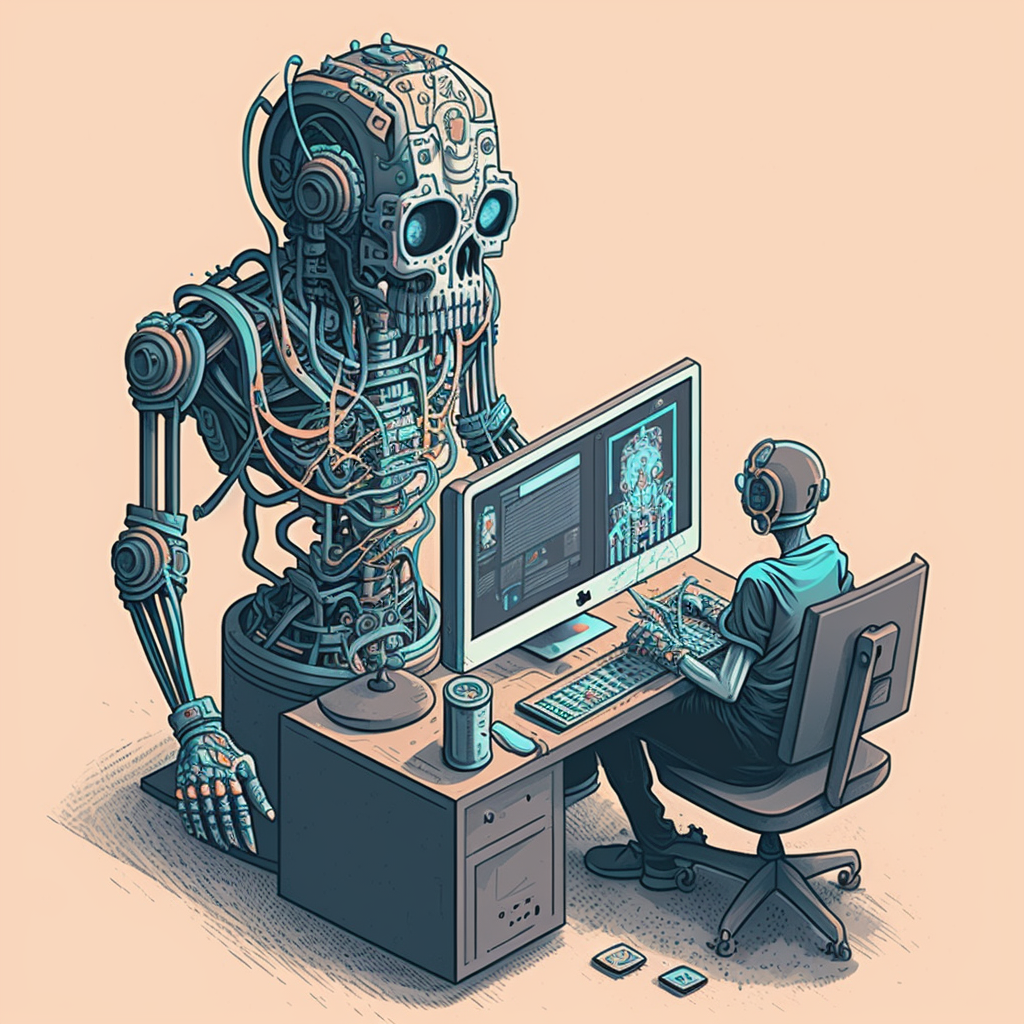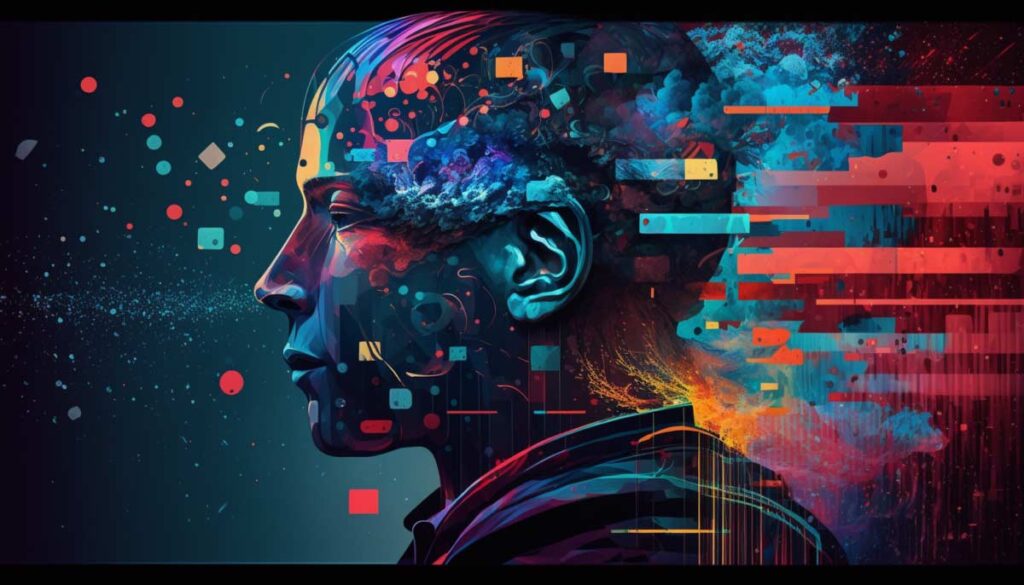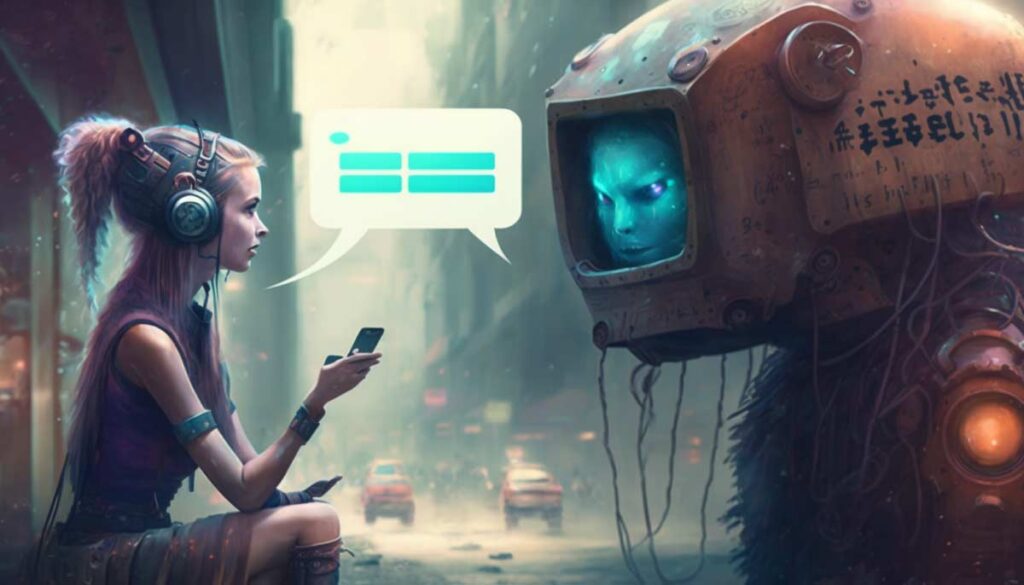Let's have a chat about taking your digital marketing to the next level
Artificial intelligence (AI) is giving marketing directors something new to think about. In the past six months AI tools like image generation software (DALL-E, Midjourney) and content generation software (ChatGPT) have captured the attention of not just digital marketers but the general audience. The impact that AI can potentially have on business in the 2020s and beyond cannot be overstated. It’s a topic that our digital marketing agency has been keeping a close eye on, and will continue to do so.
Today AI-powered technologies, such as machine learning and natural language processing, are being used to improve marketing strategies and enhance customer engagement, all in the hope to drive better business results. However, the evolution of these AI tools for marketing is quickly evolving, with new updates being added to existing tools and new platforms being launched. In just six months these AI tools will be superior to the versions available today.
Let’s examine seven different uses of AI marketing for business as I see their functionality right now, and how they could potentially grow their capabilities and offer more value to a company seeking an edge.

1. Personalization (The Dawn of shUX)
One of the most significant impacts of AI on marketing is personalization. Personalization has been a critical element of marketing for years; we’ve seen companies like Google and Facebook incorporate the customization of content and advertising for their users.
However, new developments in AI have taken personalization for marketing purposes to the next level. Building upon their previous successes, and taking advantage of new AI-powered data sifting tools, businesses can now analyze vast amounts of data to understand the unique preferences and behaviors of their customers. This “shadow user experience”, or shUX to coin a term, can then be used to deliver highly personalized content, recommendations, and experiences to individual customers, all from looking at the macro-view of a platform’s data streams.
For example, an e-commerce business can use AI to analyze a single customer’s browsing and purchase history to make personalized product recommendations, or draw upon a wider group of customer data to make new individualized recommendation. If more people buy a certain item earlier in the week, the AI will suggest a similar product to a user that matches that user’s past purchases, even if the user in question hasn’t expressed an interest in said item(s) before.
Example: The Banking Industry
Imagine a bank like TD or Bank of Montreal. Their network records millions of transactions from a huge variety of customers; married, single, of all ages, homeowners, renters, and so on.
By using AI to analyze a customer’s interactions at an ATM, using online banking or even in person at a branch, the bank can then offer a incredibly personalized experience for that unique customer. Everything from the imagery that they see when logging in to the customer portal on their browser, to the language used in interactions (formal versus casual depending on what age group the customer falls into), the products offered, and so on suddenly becomes options. And through A/B testing the bank’s AI marketing system continues to get more data, finding out what versions work better than others. No marketing manager needs to spend dozens of hours looking at the monthly results; they get an automated report from the software and make the big decisions from the data collected.
Imagine how many hundreds of hours can be saved by using this form of personalization for a large company like a bank, grocery chain or retail outlet. Now imagine what the possible increases in customer engagement and loyalty could be for these companies, ultimately bringing better business results.

2. Automation
Another significant impact of AI on marketing is automation. Software automation has already improved upon repetitive and time-consuming tasks, freeing up marketers to focus on their bigger picture strategic activities.
Automated email marketing campaigns, social media posts, and customer support interactions were already being used before the latest improvements in machine learning. With AI, all automated services stand to increase their sophistication, customization abilities, and integrate multiple marketing tasks under one central command system. We may be looking ahead to an integration of email, social, support, chat, even sales for one company supplied by one piece of software. This is what happened with Microsoft Office in the 1990s where many diverse office tools were all brought under one roof.
Look for acquisitions either by AI software companies or digital marketing software companies. If a Mailchimp or Sprout Social buys an AI company, or vice versa, this is where they are placing their bet.

3. Predictive Analytics
Predictive analytics is another developing area where AI is making a significant impact on marketing. With the help of AI-powered tools, businesses can analyze vast amounts of data to make predictions about future trends and behaviors. This data can then be used to optimize present and future marketing strategies and campaigns.
Let’s zoom in on one aspect of eCommerce: churn. Advancing AI can analyze a company’s complete customer data record to predict which customers are most likely to churn. It can then implement retention efforts to try and turn those one-time customers into repeat customers. Some for of this is likely already in use by bigger retailers like Amazon.
Similarly, AI can analyze social media data to predict which content is likely to go viral. Imagine writing a tweet and having the AI in your social media tool give you a rating on the likelihood of your content getting retweeted. Now imagine being able to resubmit your text and have the AI social software “improve” the text to make it more clickbaity.
ChatGPT is already doing this for its content generation tool. There hasn’t been a social media tool yet, but it’s likely coming down the pipeline.
4. Customer Service
AI-powered tools are also transforming customer service. For the past four or five years chatbots have been providing 24/7 customer support, answering common questions and resolving simple issues. This not only improves the customer experience, giving the user answers to their questions almost immediately, but also reduces the workload on human customer service agents.
AI-powered customer service tools will be able to analyze customer support interactions to identify common issues and provide insights to help businesses improve their products and services.
Imagine the development team receiving a weekly AI-generated report listing off the most commonly asked customer questions, or a list of the “dead ends” that users take on the company’s website. The dev lead would examine the list and set tasks for their team to fix the problems, build new UX or pages, and plug holes.
In some ways this is fantastic; you get a better user experience. In other ways this could lead to worse “dark pattern” websites which take the user on journeys to squeeze more out of them.

5. Voice Search
With the rise of smart speakers and voice assistants like Google Assistant, Siri and Cortana, businesses can optimize their content for voice search. This means investing time to understand how people use voice search and then optimizing your company’s content accordingly. It’s just like how marketers use SEO to get more traffic to their webpages, but through the mindset of how humans ask for information aloud instead of through a keyboard.
One human being can ask a question in a different manner than another person, but the question is essentially the same for both. AI-powered tools can help businesses understand voice search behavior for many different demographics and optimize the content results in the way that the question was asked.
Here’s an example: a business uses natural language processing (NLP) software to understand how people phrase voice search queries for their products or services. The manner in which a voice query is given to the business’s website or app can be personalized depending upon the customer’s age, education level, manner of speech, even the nuance of voice (frantic versus relaxed). The answers the users will receive can offer the same product or service to both users, but the copy, the imagery, even the price can vary depending upon the way that the question was asked to the system.
In a primitive way this is already happening with food delivery and rideshare apps. When peak demand for their service happens Uber adds a “surge” fee; and with services like Uber Eats, Skip the Dishes, and DoorDash, the prices for the same dish from the same retail store can vary depending upon demand of the system.
Now imagine this amped to the next level: a mother needing cold medicine asks her smartphone for the closest drugstore open. The system recognizes this as a query from a user that likely needs a quicker result, and so adds on a recommendation for a delivery service. It may even recommend a consult with the pharmacy’s chatbot, upping the value for the customer to choose this store for their purchase.

6. Social Media
Social media was mentioned earlier in the predictive analytics section, but here we’ll dive deeper into how much more AI can do. I mentioned earlier how AI-powered tools can analyze social media data to identify trends, sentiment, and influencers. This data can then be used to optimize social media campaigns and create more engaging content.
This is the first step. The next would be for an AI social media tool to start learning the voice and the frequency of posting of the human content creator and then mimicking the real person’s work. Social networks like Twitter, Facebook, Instagram and the like already recommend trending topics based on who we follow and prior searches. If you take the capability of ChatGPT, matched it with the machine learning capability of a chatbot, and applied it to content generation for a social media platform, you get AI written original content that conforms with that channel’s earlier posts.
The next step would be in tweaking the content to read as more natural, and in a greater similar voice to the human-written content. I honestly feel that within five years it might be hard, if not impossible, to see the difference between 100% humanly written social content and content suggested and written by software.
In a short amount of time people on social networks may be interacting with social bots in realtime, having conversations, debates and even arguments with them.

7. Customer Insights
The final idea pushes even further the concept of predictive analytics, but it should be right around the corner.
We know that AI-powered tools are providing businesses with deeper insights into the present day actions of customers. Predictive analytics forecasts what is likely to happen by observing historical data. But, by taking that thought to the next logical level, a company should be able to monitor industry news and incorporate that data into its own customer data to make more accurate predictions of future trends.
Let’s say that you’re the CEO of a grocery chain. Your POS system gathers a lot of data already about customer shopping habits: how many people buy milk, or this kind of produce, or that brand of cereal. Your marketing system aggregates all of that data so your marketing team can identify trends early and learn how to market to customers better.
Now imagine adding to the capabilities of your system so that economic news relevant to your customers’ shopping habits is also evaluated into your forecasting. If inflation is on the rise, and multiple news stories point to customers having less money to spend on groceries, that information gets factored into the recommendations your system makes. Place a higher order for this cereal brand now to lock in this lower price, which pays off in savings a few months down the road. With the incredible number of variables in play for grocery store pricing (weather, politics, trends, economics, etc.) AI makes it easy to identify opportunities save money, make more money, increase customer loyalty, and better weather potential downturns.
Big chains should be the first to benefit from these advancements, but based on past examples, the software trickles down to mid-size and SMB businesses quickly.
Some of these observations were easier to make, and some are more along the lines of educated guessing. That said, I feel that by looking back on how earlier software advancements were implemented by business, one can determine that there is a general progression about how AI advancements in marketing will be used.
The next few years will be even wilder than what we’ve seen so far.

